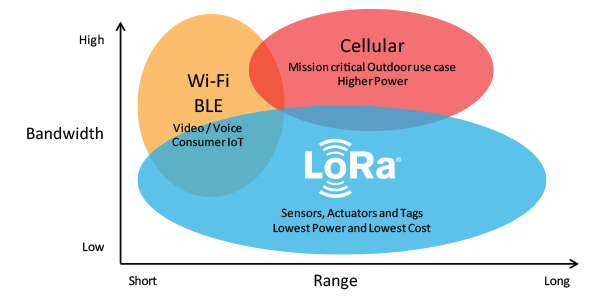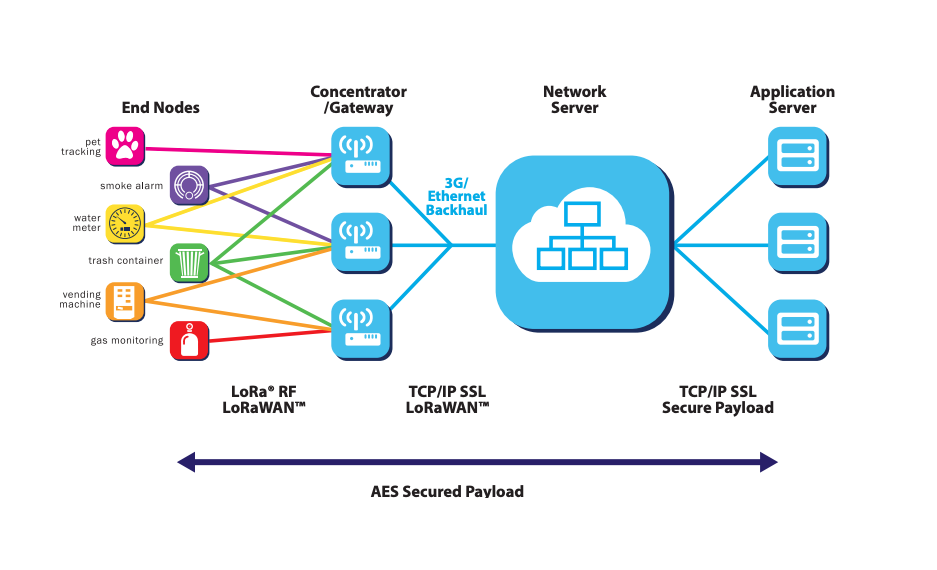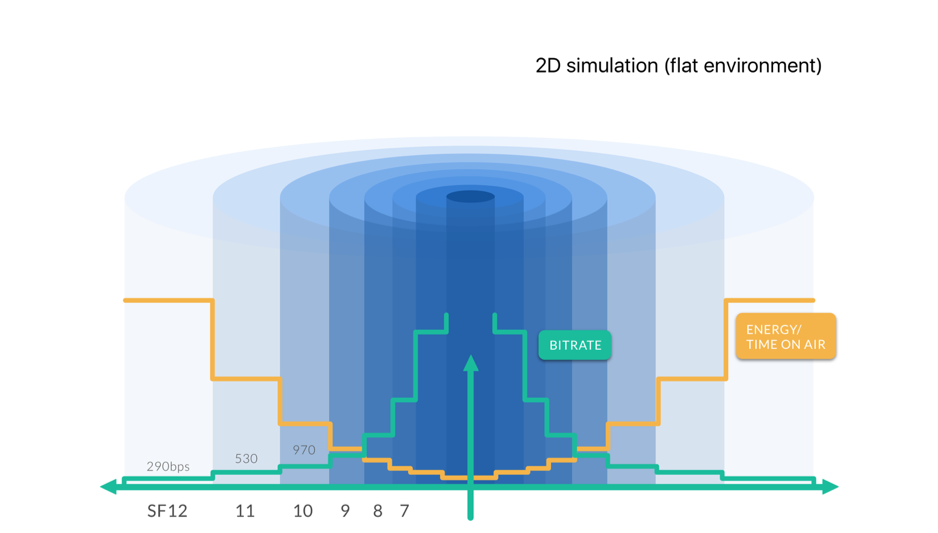Let's plug & play with LoRa!
by Lucian Corduneanu
about 3 years agoIntroduction
We need to talk. To tech talk. This is the beginning of a beautiful friendship between us and technical stuff we want to explore together, in order to (better) understand our solution and especially how it can benefit businesses. We begin by giving you an introductory technical overview of LoRa and LoRaWAN. Technical, but in human words. Let’s do this!
What is LoRa?
In human words, LoRa is a way to safely transfer sensor readings over radio, allowing you to send data with low energy consumption at long distances up to 15 Km. In tech words, LoRa is a low-power wide-area network (LPWAN) protocol based on spread spectrum modulation techniques. It uses a licence-free sub-gigahertz radio frequency which, for example, here, in Europe, is 868 Mhz.

Image source: Semtech
What is LoRaWAN?
Now that we know what LoRa is, let’s find out what LoRaWAN is. Well, it is an open-standard networking layer from LoRa Alliance. This protocol is responsible for device battery life, network capacity, security, quality of service, and more. So much more!

Image source: LoRa Alliance
Do we like LoRa?
We sure do! Why? Why not?! Look at all these cool features:
- deep indoor coverage;
- star topology;
- over the air activation;
- over the air firmware updates;
- low power-optimized;
- minimal infrastructure;
- low-cost end node;
- open software.
See? Lots of things to like!
Ways to connect or gateways
In human words, gateways make possible the connection to the cloud. They receive incoming radio transmissions from nearby devices and forward them over the internet to a network server. They act as a bridge from radio to the network server and vice-versa.
Without going too much in detail, you can expect your devices to have a high data rate (bitrate) near the gateway spending less time on-air, on the other hand, distant nodes will work harder to transmit, investing more energy using low data rate.
Find out more about gateways here.

Image source: TheThingsNetwork
In more human words, if we may say so, let’s imagine this scenario: two lovers on a date. On that note, think that with gateways is similar.
First, the two are having a conversation at the same table in a noisy bar. All sweet and cool. You still need to speak up so that your significant other understands what you are saying. But it does not compare to how you would have to shout from the other corner of the noisy bar. You need to invest more energy and also speak slowly. Right? You know it! With gateways, it’s exactly the same.
Fun fact: the LoRa gateways are very sensitive and can actually receive a message below the noise level. So even if the noise level in that bar is high, your date will have ears only for you.
Find out more about Signal-to-Noise Ratio here.
Why is it working for us?
- This tech allows us to easily factory provision Sensix devices with security keys and correct firmware so that they are prepared to activate over the air using the nearby gateway when installed.
- We built our device management system that integrates directly with TheThingsIndustries open-stack v3 network server, so managing our devices is easy: Auto-assign credential keys, QR code labels, Build custom firmware, sync with the network server and others.
- Our customers can truly have the plug & play experience. Install a Sensix device on the wall or in the distribution panel, and it is just working, sending data to gateways periodically.
- It enables Sensix solutions to be infrastructure independent. Typically each site requires one LoRa gateway to cover a 2-3 Km range in dense, urban locations.
- Cost-efficient manufacturing process.
- Allows Sensix devices to extend battery life to more than 1 year, decreasing the maintenance period.
The more you know, the better
If you are tech-savvy and want to learn more about this tech, here are some good resources:
Enjoy the reading/ride!
P.S. See you at the next tech talk (to be read technical blog post)!
Previous articles
The Role of Artificial Intelligence in Optimizing Energy Efficiency in Smart Buildings
6 days agoIn an era where climate change and environmental sustainability are at the forefront of global concerns, the need for energy-efficient buildings has become more pressing. Buildings are responsible for a significant portion of global energy consumption and carbon emissions, making them a key focus for energy conservation efforts. To enter the era of smart buildings, where cutting-edge technologies, sensors, and artificial intelligence (AI) are transforming the way we think about energy efficiency, here are some of our thoughts.
Read moreWeathering the Elements: Tips for Riding Out Extremes with less Energy
20 days agoWeather is a major factor that affects energy consumption by determining specific patterns. In particular, temperature, humidity, precipitation, and wind speed all have a significant impact on how much energy we use. Several studies have explored the link between various weather conditions and energy use.
Read moreEmbracing Plastic Free July
2 months agoPlastic Free July is a global initiative aims to gather as many people as possible to be part of the solution to plastic pollution. Everything so we can have cleaner air, water, forests, etc.
Read more